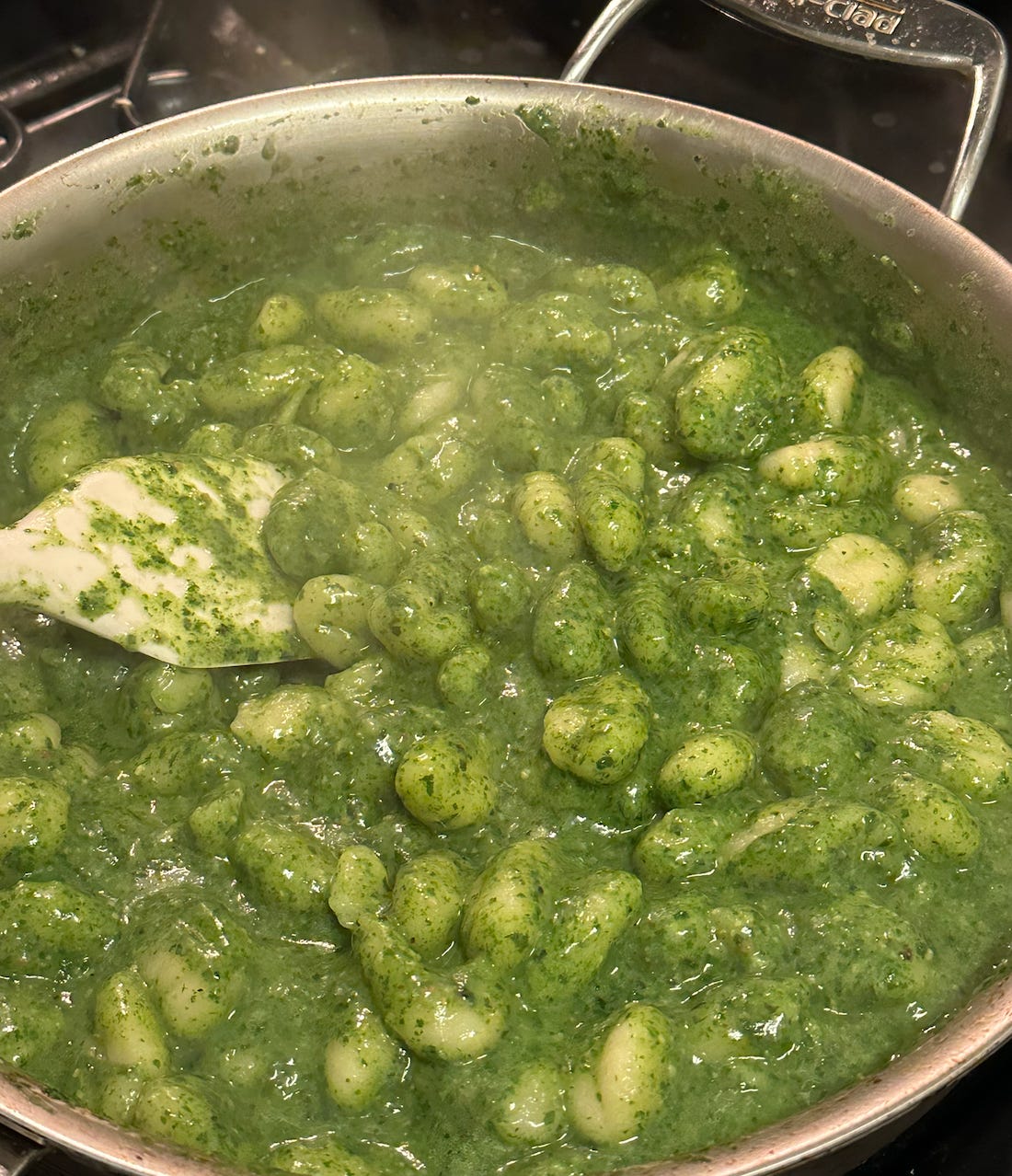Writing about pesto in December may upset my ancestors. Yes, pesto should absolutely made throughout the summer when gardens and farmers markets are overflowing with fresh basil. But you know what? It’s dark at 4:30; it’s cold; it’s gray. We need a summer pick-me-up right now. It’s urgent.
This “winter pesto” includes spinach to stand up for the lack of fresh basil available. You can also add some kale, if you’d like.
WINTER PESTO
This pesto stays bright and green because of blanching. My friend, do not let blanching intimidate you. To blanch is to lightly cook herbs or vegetables in boiling water and then immediately drop into ice water to stop cooking. This locks in color and flavor. Blanch.
Pesto can be made with hundreds of pasta shapes. I recently made this with gnocchi which made for a comforting winter meal. I served it with a simple arugula salad.
Ingredients:
A few bunches basil, stems removed
A few bunches spinach, cleaned with stems removed
1/3 cup olive oil
2 large garlic cloves
1/2 cup pine nuts
About a cup of parmigiano reggiano, freshly grated
Pasta, dealer’s choice (gnocchi, rigatoni, linguini, bucatini…)
Instructions:
Preheat oven to 375. Spread pine nuts evenly on a sheet pan and roast until golden, about 10 minutes. Remove from heat and let cool.
While pine nuts are roasting, bring a large pot of salted water to a boil. When water is rapidly boiling, add basil and spinach. Cook for two minutes. Remove from pot and dump into an ice bath to stop cooking. Squeeze out excess water. Keep squeezing! Bring water back to a boil. We’ll cook our pasta in there.
In a food processor, blend spinach, basil, and garlic with a third cup of olive oil until a rough paste forms. Add pine nuts and blend until smooth, about one minute. Mix in parm. Add salt and lots of black pepper to taste.
Your pesto will not look like sauce yet. The pasta water will make it glossy and wonderful.
When your water is boiling again, add pasta and cook until just before al dente — about 2 minutes under the cooking instructions. While pasta is cooking, heat a large sauté pan on medium low with a tablespoon of oil. Add pasta directly from the boiling water when ready. We want some of that starchy water to come with it, so do not drain the pasta. Add pesto to the pan with the pasta and gently combine with a rubber spatula. Continue adding pasta water with a ladle until the sauce loosens up and becomes glossy. Go slow and see how the sauce changes with each ladle.
The starchiness of your water will impact how much you need. I use a lot of pasta water with pesto because it’s very concentrated, usually more than a full cup.
Plate! If I feel like the pesto needs some more brightness, I zest some lemon on top. Finish with flaky salt and more black pepper, as always.
You can always text me with cooking questions and I’ll do my best to help!
xoxo michael
914-356-2627







Your ancestors would understand (maybe :) nice work.